A Matter Of Life And Death might be called Powell & Pressburger‘s rough English approximation to It’s A Wonderful Life, or more accurately a reinvention with an entirely different slant and added table tennis. For Clarence, angel second class read Collector 71 (regular Powell & Pressburger collaborator Marius Goring) and Dr Frank Reeves (regular Powell & Pressburger collaborator Roger Livesey.) However, unlike the American version with its clear religious connotations, AMOLAD is more circumspect. It begins with a disclaimer, as follows:
“This is a story of two worlds, the one we know and another that exists only in the mind of a young airman, whose mind and imagination have been violently shaped by war. Any resemblance to any other world, known or unknown, is purely coincidental.”
But it does not say if the other world portrayed is part of the world we know, a manifestation of Squadron Leader Peter Carter (that quintessentially English actor, David Niven) suffering hallucinations, or indeed an entirely different world – that depends on your point of view. From Wikipedia:
While the film never specifically states whether Peter’s visions are real, the actor playing the judge also plays the brain surgeon. As is shown in the paper, “A Matter of Fried Onions” and subsequent work by Diane Broadbent Friedman, there was a large amount of medical research carried out to ensure that the symptoms shown agreed with a correct medical diagnosis of Peter Carter’s condition.
There are two scenes set within “the other world” in which Peter is not present (Trubshawe’s arrival and just before the start of the trial) which seem to imply the existence of the other world. A minor point regarding a borrowed book also seems to hint at the possibility of its existence, however all of these could be explained simply by Peter’s mind filling in blanks during times he is unconscious. The producers took pains never to refer to “the other world” as heaven, as they felt that was too restrictive and limiting.
The fact that the “other world” is portrayed in monochrome is also worthy of note, perhaps signifying that only real life provides the true colour to existence, or maybe that dreams and hallucinations are often black and white.
So to the plot: Carter was notionally scheduled to die but was missed in the fog. Despite bailing out of his plane he was neither killed on impact, nor drowned, though his trusty Flying Officer Bob Trubshawe (Robert Coote) had already bought it. As a result Carter cheats death for a period, and in that period falls in love with the American girl called June (Kim Hunter), with whom he was talking by radio when his plane was en route for a watery grave. Truly a whirlwind romance ensues.
The French fop known as Collector 71 is sent to summon him back, but Carter refuses to go, resulting in his case being brought to trial in the nether world. Reeves observes his condition and recommends brain surgery to save Carter’s life. Reeves is then killed in a motorcycle accident and on arriving in the other world is invited on Carter’s behalf to act as his defence council, and ultimately secures the acquittal that allows Carter to stay on earth with his beloved.
Alternately, the brain surgery is successful and Carter’s hallucinations stop so he can live a long, happy and healthy life with his new-found love.
The ambiguity here works well, as indeed does the debate about life and death, the value of love, and indeed the relative value of the British to that of Americans. Powell and Pressburger’s script quotes many authoritative sources in the course of this debate without ever ascending (or descending) to a dry-as-dust academic debate. Maybe there is a longer version of the trial quoting many more sources in the full course of rigorous and robust discussions, but as it is the film strikes a happy balance between entertainment value and analysing emotional call and response.
This is also helped by what was, for 1946, iconic images. Who could forget the giant escalator, which was indeed created especially for the movie. Nor indeed the freeze-frame effect of time stopping when the Collector appears to confront Carter. Even the other-worldly courtroom, a vast arena in a hyper-modernist style, created a look unlike anything then seen, Also from Wikipedia:
A Matter of Life and Death was filmed at D&P Studios and Denham Studios in Denham, Buckinghamshire, England, and on locations in Devon and Surrey. The beach scene was shot at Saunton Sands in Devon, and the village seen in the camera obscurawas Shere in Surrey. Production took place from 2 September to 2 December 1945, used twenty-nine sets, and cost an estimated £320,000.
The film had an extensive pre-production period due to the complexity of the production: The huge escalator linking this world with the other, called “Operation Ethel” by the firm of engineers who constructed it under the aegis of the London Passenger Transport Board, took three months to make and cost £3,000 (£105,364 in 2014 pounds). “Ethel” had 106 steps, each 20 feet (6.1 m) wide, and was driven by a 12 h.p. engine. The full shot was completed by hanging miniatures. The noise of the machinery prevented recording the soundtrack live — all scenes with the escalator were dubbed in post-production.
There was a nine-month wait for film stock and Technicolor cameras because they were being used by the US Army to make training films. The decision to film the scenes of the “other world” in black and white added to the complications. Where the “other world” is seen, it was filmed in Three-Strip Technicolor, but the colour was not fully developed, giving a pearly hue to the black and white shots, a process cited in the screen credits as “Colour and Dye-Monochrome Processed in Technicolor”. (Breaking the fourth wall, Conductor 71 remarks during an early transition, “One is starved for Technicolor up there.”)
Other sequences also presented challenges, such as the stopped-action table-tennis game for which Hunter and Livesey were trained by champions Alan Brooke and Viktor Barna; the scene where Carter washes up on the beach, the first scene filmed, where cinematographer Jack Cardiff fogged up the camera lens with his breath to create the look he wanted; and the long, 25-minute trial sequence, which required a set with a 350-foot (110 m) long by 40-foot (12 m) high backcloth.
At least one friend tells me it is her all-time favourite movie, and it would be churlish not to describe A Matter Of Life And Death as an authentic classic, one that through the skill of its creators holds interest where the vast majority of other war films died a death long since.

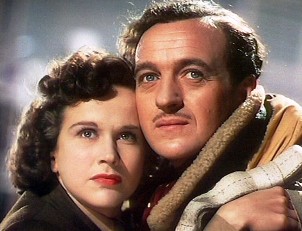
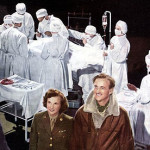
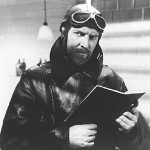


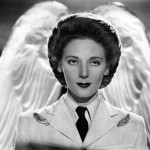

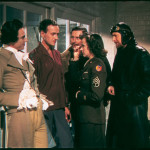
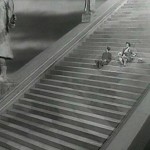

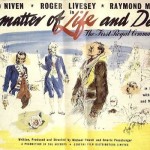


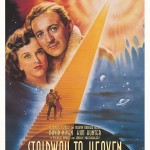
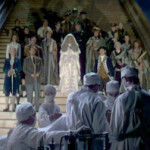

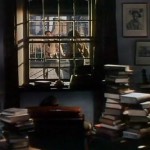
Hi, I do think this is an excellent blog. I stumbledupon it I may return once again since i have bookmarked it. Money and freedom is the greatest way to change, may you be rich and continue to guide others.
I may return once again since i have bookmarked it. Money and freedom is the greatest way to change, may you be rich and continue to guide others.
I’m impressed, I have to admit. Rarely do I come across a blog that’s equally educative and entertaining, and without a doubt, you have hit the nail on the head. The issue is something that not enough folks are speaking intelligently about. I am very happy I found this in my search for something concerning this.